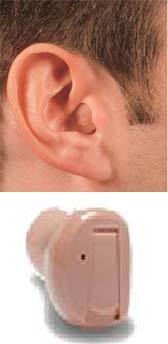What Is Hearing Aid And its type
Some Fact related To Hearing Aid And its type
Hearing Aid:
- The ability to communicate is played an important role in every aspect of life hearing aids is a small machine used by the deaf person
- hearing aids have five major components speaker, battery, amplifier, microphones, microchip
- Hearing machine cost depend on technology that is used in the hearing device are mainly three types basic, mid-range
- Hearing Solutions we have made sure that we offer the most flexible, adaptable ear hearing aids.
- Hearing machine cost depend on technology that is used in the hearing device are mainly three types basic, mid-range
- A hearing Aid helphelpserson hear An amplifier makes the sound louder, a microphone easily takes sound around you, a receiver sends these amplified sounds into your ear.
- hearing aids are wearing in or behind your ear
- Purchasing a hearing machine is an advance on your overall health and wellness. Every set of hearing aids comes with an existing partnership to care for your hearing health.
- In age-related hearing impairment, known as presbycusis, changes in the inner ear that happen as you get older cause a slow but steady hearing loss. The loss may be mild or severe, and it is always permanent.
Types Of Hearing Aids
- Behind-the-ear hearing aids
- In-the-ear and in-the-canal hearing aids
- Completely-in-the-canal hearing aids
- Invisible-in-the-canal hearing aids
1-Behind-the-ear hearing aids:
- Behind The Ear hearing device are probably one of the most versatile types of hearing device on the market, some varieties will suit all types of hearing aid from mild to severe.
- Available in superpower, standard, mini, or micro sizes
- It is the most used style of hearing aids, the ones which are suitable for almost all ages, from an elderly person to a child.
- BTE hearing device remains outside of the ear, and also because they are significantly larger, it can make them much easier to keep clean than with some of the smaller in-ear varieties.
- Sound directed into the ear canal through tubing and earmold
- Available in superpower, standard, mini, or micro sizes
2-In-the-ear and in-the-canal hearing aids:
- ITE is a hearing device that can hold larger amplifiers and processors and in some models, additional directional microphones can be suitable for users with more severe levels of hearing loss than some of the smaller varieties of hearing aids.
- ITE hearing aids can be extremely comfortable to use and control just because their larger size allows for more control buttons and switches to be incorporated into the body of the hearing aid itself.
- ITE hearing aids can be extremely comfortable to use and control just because their larger size allows for more control buttons and switches to be incorporated into the body of the hearing aid itself.
- ITE is a real bonus for many people who find adjusting to an unnatural feeling phone position very difficult.
- related to many other types of hearing aids (like as Open/RIC or BTE) where a telephone has to be held lightly above or to the back to ear because In The Ear hearing aids have all of their functionality placed directly in the ear concha it means that when using the phone it can simply be held to ear as usual
3-Completely-in-the-canal hearing aids:
- As their name implies Completely In the Canal hearing device rest completely within your ear canal, which means they are almost invisible unless someone were to look directly into your ear
- CIC hearing aids are fitted within the ear canal itself, which means that the receiver can more directly interact with the eardrum and thus the hairs within your inner ear that transmit sound waves to your auditory nerve. This results in a much more natural sound profile.
- Canal hearing aids sit within the ear canal, which means that the ear is left free to perform its natural function of channeling sound waves down towards the ear canal.
- as Completely In the Canal (CIC) hearing aids only have a very small portion of their design sitting externally to the ear canal, then issues with the hearing aid picking up and transmitting wind noise are greatly reduced.
- This is advantageous because it means that the natural directionality of the sound can still be communicated to the inner ear, resulting in users being much more able to detect where sounds are coming from than with many other hearing aid types.
- If they are carefully and regularly cleaned, maintained, and dehumidified this should not cause you too many issues, however, this level of maintenance may be unsuitable or off-putting for some users.
4-Invisible-in-the-canal hearing aids:
- Invisible In the Canal (IIC) hearing aids are very similar to Completely In the Canal (CIC) hearing aids except that they are slightly smaller and are worn deeper in the ear canal making them completely invisible, even if someone were to peer inside your ear.
- it says so in the name and is probably the main reason that people choose Invisible In the Canal (IIC) hearing aids, the fact that they sit deep enough in your ear canal that they are completely invisible to other people.
- because Invisible In the Canal (IIC) hearing aids are made from a custom mold of your ear canal and that they sit deeper in the ear canal and rest against a more bony part of your ear than a Completely In the Canal (CIC) hearing aid.





